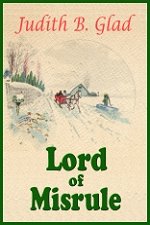- amoral vs. immoral
- Italo Calvino - author of Il nome, il naso (1973) was an Italian writer and novelist. His best known works include the Our Ancestors trilogy (1952-1959), the Cosmicomics collection of short stories (1965), and the novels Invisible Cities (1972) and If on a winter's night a traveler (1979). His style defies easy classification; sometimes his writing has an air of fantasy reminiscent of fairy tales (the trilogy, Cosmicomics), but sometimes his writing is more "realistic" and in the scenic mode of observation ("Difficult Loves", for example). Some of his novels have been called postmodern, while some have been labeled magical realist, others fables, others simply "modern." Twelve years before his death, he was invited to and joined the Oulipo group of experimental writers. And if you ask me looks a bit like Robin Williams.
- Ovid represents all that is worth telling in literature.
- it is ambiguous
- Ovid doesn't takes sides, he includes all possibilities, or rather excludes none.
Check Elizabeth's Blog
- there is no justification for the acts within the pretty poem.
- all that we have against carnage is a pretty poem (Flower power).
Since brass, nor stone, nor earth, nor boundless sea,
But sad mortality o'er-sways their power,
How with this rage shall beauty hold a plea,
Whose action is no stronger than a flower?
O, how shall summer's honey breath hold out
Against the wreckful siege of battering days,
When rocks impregnable are not so stout,
Nor gates of steel so strong, but Time decays?
O fearful meditation! where, alack,
Shall Time's best jewel from Time's chest lie hid?
Or what strong hand can hold his swift foot back?
Or who his spoil of beauty can forbid?
O, none, unless this miracle have might,
That in black ink my love may still shine bright.
Movie - Andrei Rublev - Revealing mistakes: After Rublev comments that nothing is more terrible than snow falling in a temple, some of it lands on Durochka's hair and is clearly a white feather. The film is intended to reflect the "soul" of Russia and its people throughout time, not in one specific period.
The state is represented as oppressive of the artist whose ideas deviate from the prescribed norm, and regards art as a means to glorify the powers that be. Corruption and strife between power-hungry rulers is depicted: disregard for human lives, mass murder and slaughter as well as extreme cruelty of the government/police – purges, torture, executions, forced exile. Also, as in the Jester scene, the betrayal or selling out of the "subversive" elements of society is alluded to (writers or poets killed and/or humiliated into silence).
The bell-casters represent those who manage to produce great art revered by both the people and the state, even in the face of possible death; and the pagans possibly allude to the emerging counterculture movement.Several scenes within the film depict animal cruelty, but only one featured real physical harm to an animal, in the scene when a horse falls from a flight of stairs and is then stabbed by a spear. To produce the scene, the horse was shot in the neck before hand and once more afterwards in the head. This was done to avoid potentially harming a stunt horse—the horse was brought in from a slaughterhouse, killed on set, and then returned to the slaughterhouse for commercial consumption. (I don't even know what to say to this.)


No comments:
Post a Comment